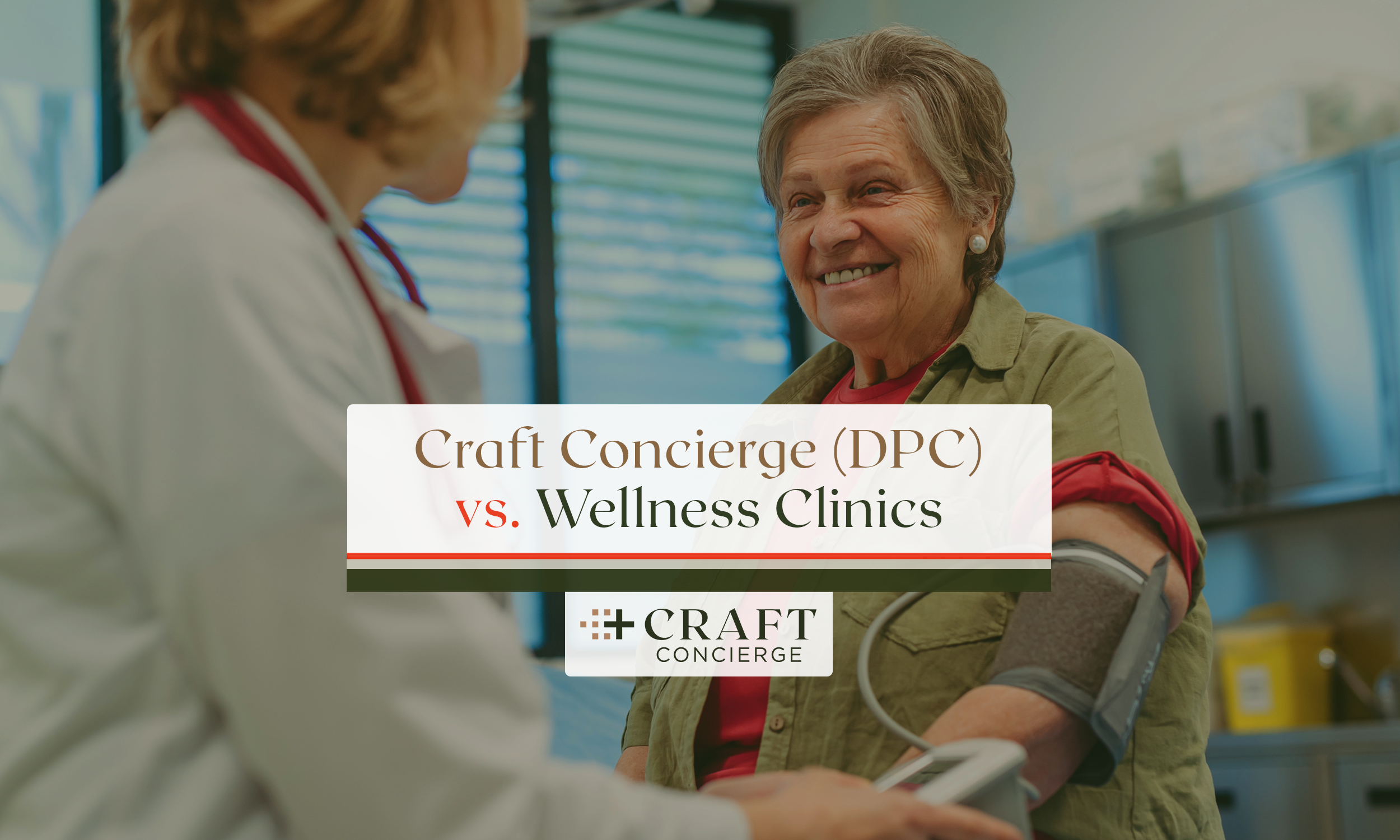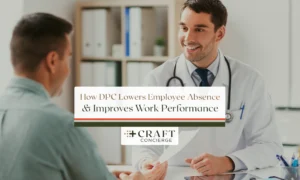There comes a point in your life where you finally take a step back and realize that health is indeed something that should never be taken for granted.
You start paying closer attention, not just to your symptoms, but to how your care is delivered. And suddenly, all those rushed visits, confusing bills, and one-size-fits-all advice from your current providers no longer feel acceptable.
That’s when many people start exploring new options like Direct Primary Care and wellness clinics.
Both claim to offer a better way to take care of yourself. But while they may sound similar on the surface, the kind of care you receive (and how far it takes you) can be very different.
Let’s break down what sets these two models apart and which one might truly support your long-term health goals.
What Are Wellness Clinics?

Wellness clinics focus on helping you feel better through treatments that support things like energy, beauty, and general well-being. They aren’t meant to replace your regular doctor. Instead, they offer quick access to popular services that people often want outside of traditional medical care.
Most wellness clinics offer things like:
- IV hydration therapy
- Vitamin B12 or D injections
- Hormone replacement therapy
- Aesthetic services like Botox or fillers
- Weight loss shots or nutrition plans
These clinics are often visited by people who want a boost in how they feel or look, or who are managing symptoms like fatigue, low libido, or brain fog. Many are self-pay and operate on an à la carte basis, which means you pay for each treatment or session individually.
But here’s the catch: wellness clinics usually don’t offer ongoing or full-spectrum care.
You might get a quick fix or short-term result, but there’s often no deeper dive into your full health history, lab work, or long-term plan. For anything beyond surface-level care, you’ll likely be referred back to your primary care doctor or specialist.
How Direct Primary Care Works

Direct Primary Care (DPC) is built to give you better, faster access to your doctor while keeping costs predictable. Instead of billing insurance for every visit or test, DPC works on a membership model. You pay a flat monthly fee, and that covers most of your care. That’s it.
Appointments are easy to book, often same-day or next-day. You can message your doctor directly when something comes up, and follow-up visits are encouraged, not rushed.
DPC clinics also integrate diagnostics, lab work, and health planning in one place. That means fewer referrals, less waiting, and better coordination overall.
In fact, the DPC model is gaining support from doctors across the country. According to a Doximity poll, 52% of physicians now support the DPC model. This includes strong backing from internal medicine, pediatrics, and family medicine, specialties that are often undervalued in the traditional system. Doctors who support DPC say it brings back autonomy, cuts down paperwork, and makes room for real relationships with patients.
Here at Craft Concierge, you can choose from three membership levels, depending on the kind of care you need:
- Core: $99/month or $1,069/year. Includes same-day access, unlimited messaging, minor procedures, and discounted tests.
- Vitality: $175/month or $1,890/year. Adds imaging like X-rays and MRIs, full heart assessments, and quarterly labs.
- Longevity: $500/month or $5,400/year. Covers everything in the lower tiers plus full-body scans, brain imaging, and one specialty test per year, with unlimited labs and prioritized scheduling.
This kind of care is especially useful if you’re managing a condition that needs regular check-ins or you just want more proactive care that doesn’t revolve around insurance red tape.
Craft Concierge vs Wellness Clinics
While both DPC and wellness clinics aim to give patients more control over their care, the way they do it is very different. Here’s a side-by-side look at what each offers:
| Direct Primary Care (DPC) | Wellness Clinics | |
| Type of Care | Ongoing, relationship-based | Episodic, focused on one-time treatments |
| Diagnostics and Lab Access | Included or discounted with membership | Limited or not offered |
| Payment Model | Flat monthly fee | Pay-per-treatment |
| Doctor-Patient Relationship | Long-term, continuous support | No ongoing relationship |
| Chronic Condition Management | Yes, built into care plan | No, typically outside their scope |
| Insurance Involvement | Not required | Not required |
| Long-Term Value | High—supports prevention and regular follow-up | Lower—usually short-term fixes |
| Personalized Care Planning | Yes, fully integrated | Rare, often treatment-specific only |
Who Should Choose Direct Primary Care?

Direct Primary Care is designed for people who want more than quick visits and one-size-fits-all advice. You may benefit most from DPC if:
- You have ongoing health needs like diabetes, high blood pressure, or hormone imbalance.
- You want faster appointments and easier access to your doctor.
- You’re tired of confusing insurance bills and want to know exactly what you’re paying for.
- You prefer working with a doctor who takes the time to listen and build a real care plan with you.
- You’re focused on long-term health and want your care to reflect that.
DPC is not just for those who are sick. It’s also a great option if you’re trying to stay well and prevent problems before they start.
When a Wellness Clinic Might Be a Good Fit
Wellness clinics may be a helpful option in certain situations. They might be a good fit if:
- You’re looking for occasional services like vitamin shots, skin treatments, or weight-loss injections.
- You don’t have ongoing health concerns and just want support for energy, sleep, or appearance.
- You’re already getting primary care elsewhere and just want to add elective services.
- You’re okay with paying out of pocket per visit for short-term results.
These clinics serve a purpose, especially when you want targeted therapies. But they usually don’t offer full-body care or help with long-term health planning.
Can You Use Both?

Yes. Many patients use Direct Primary Care as their main source of health support and visit wellness clinics occasionally for add-on treatments.
For example, you might get lab work, checkups, and chronic condition support through your DPC membership, then go to a wellness clinic for a cosmetic injection or IV hydration before a trip.
This approach gives you the best of both worlds: consistent care with your doctor and optional access to extra services.
If you’re building a long-term health strategy, it makes sense to start with a strong foundation. That’s where DPC comes in. It covers the essential care that keeps you healthy day to day, and gives you the option to explore other treatments when you choose to, not because your regular doctor isn’t available.
Take the First Step Toward Better Care with Craft Concierge
If you’re tired of short appointments, unclear bills, or care that feels reactive instead of proactive, it’s time to consider a different kind of healthcare. Direct Primary Care gives you a doctor who listens, a plan that evolves with you, and support that’s always within reach.
At Craft Concierge, getting started is simple:
- Tell us about yourself. Fill out a short patient form online.
- Book your first appointment. We’ll contact you within 24 hours to schedule a visit.
- Get your personalized care plan. You’ll receive guidance built around your needs, covering lifestyle, wellness, and long-term health.
Take control of your care without the insurance headaches. Explore our membership options and find the plan that fits you best.




